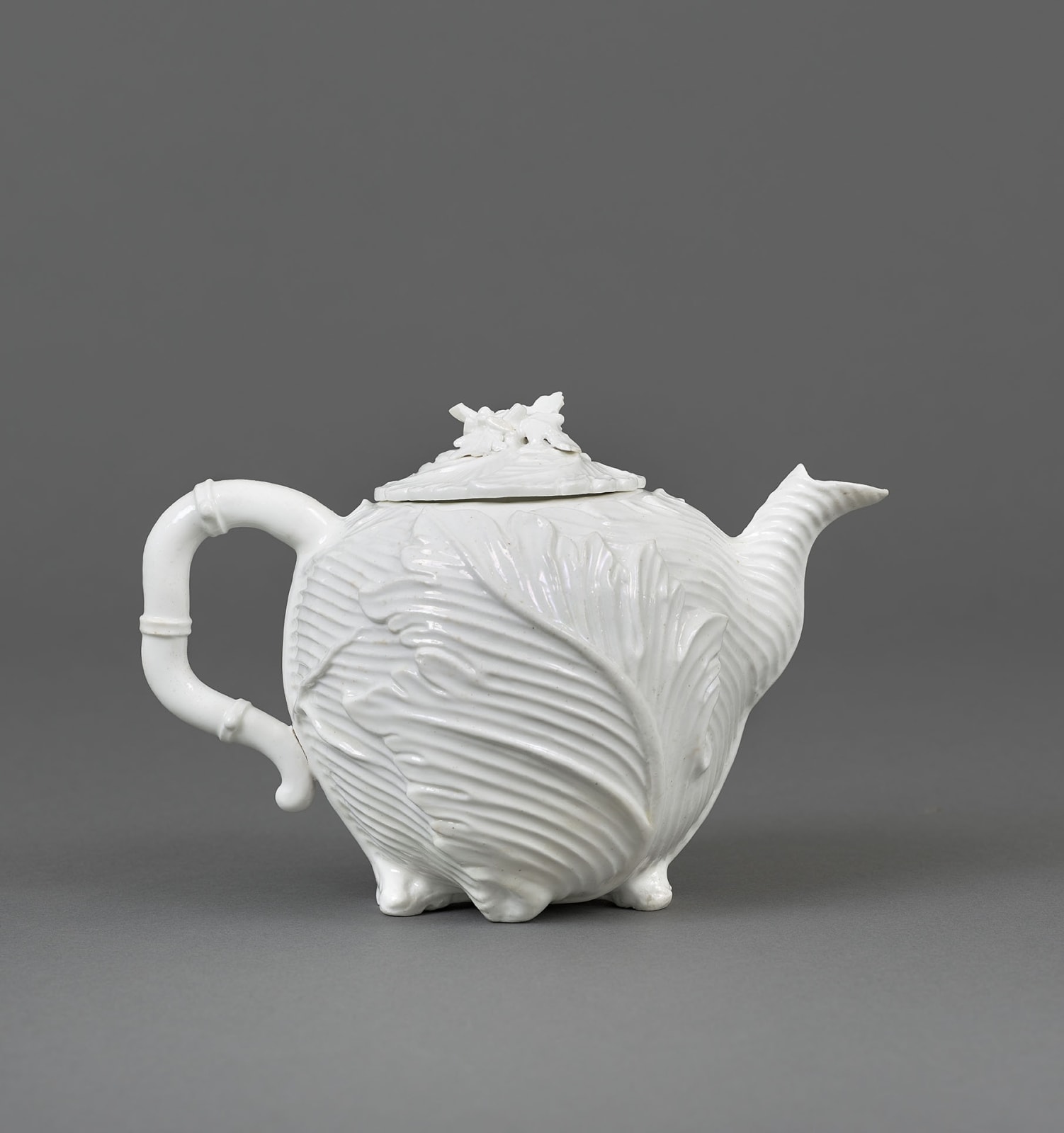

Chelsea Porcelain Incised Triangle Period Acanthus moulded Teapot and Cover, Circa 1745-49
An extremely rare and important Chelsea Porcelain Incised Triangle Period Acanthus moulded Teapot and Cover, beautifully moulded in crisp low relief with overlapping and scrolling acanthus leaves, which also form the spout, resting on and supported by six feet. The applied handle simulates bamboo and the cover with leaves and berries as the finial.
The ‘acanthus leaf’ moulded designs are sometimes also referred to as ‘strawberry leaf’ moulding. The origins of this type of relief decoration perhaps have their root in the stylised decoration found at Chantilly, drawing its influence from the original Japanese shapes and forms. Fashionable and similar wrought silver designs were also emanating from the Paris silversmiths at this time. George Wickes and Paul de Lamerie were also fashioning this type of silverware in London. Teapots occur in two sizes. The decoration also occurs on Coffee Pots, cream jugs in two sizes, saucers and cream boats. All are supported on strut-like feet. The example from The British Museum illustrated by Dr. F. Severne Mackenna, The Triangle and Raised Anchor Wares, p. 3, no. 6.
Join our mailing list
* denotes required fields
We will process the personal data you have supplied in accordance with our privacy policy (available on request). You can unsubscribe or change your preferences at any time by clicking the link in our emails.

